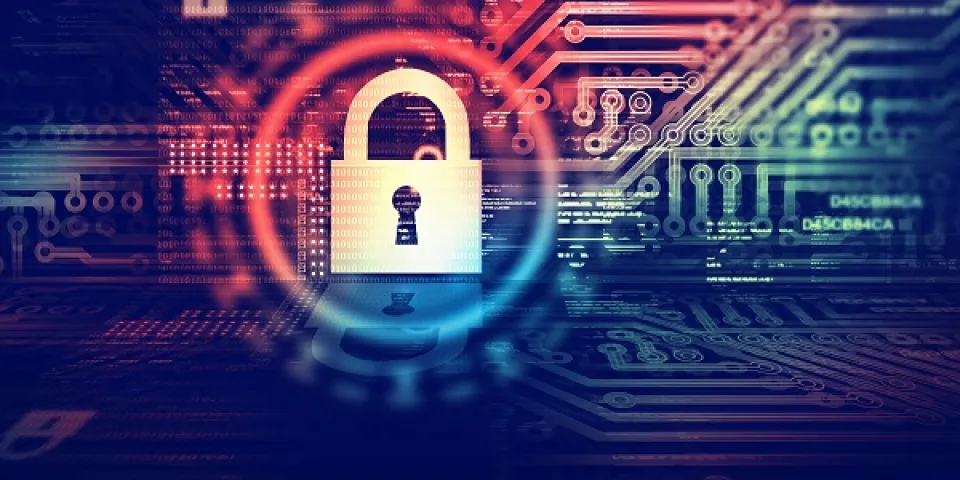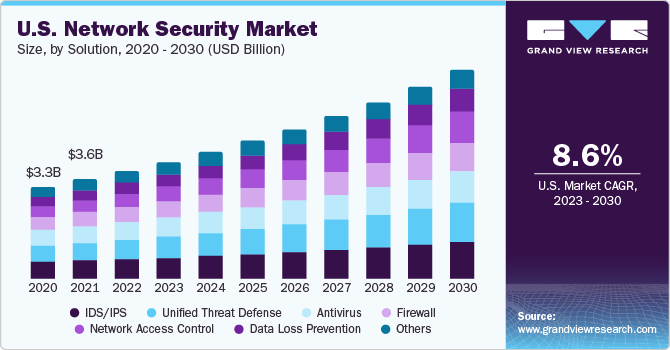The Importance of FFT Pipeline Protection in Preventing Unauthorized Access
The Importance of FFT Pipeline Protection in Preventing Unauthorized Access
Blog Article
Exactly How Data and Network Security Safeguards Versus Arising Cyber Threats
In a period noted by the rapid development of cyber hazards, the significance of information and network protection has never been much more noticable. Organizations are increasingly reliant on advanced security actions such as encryption, access controls, and positive surveillance to guard their electronic possessions. As these dangers come to be a lot more intricate, comprehending the interplay in between information security and network defenses is necessary for minimizing threats. This discussion intends to discover the crucial components that fortify an organization's cybersecurity stance and the methods necessary to remain in advance of prospective susceptabilities. What stays to be seen, nonetheless, is exactly how these steps will certainly develop in the face of future obstacles.
Recognizing Cyber Risks

The ever-evolving nature of technology continuously presents new vulnerabilities, making it essential for stakeholders to remain watchful. Individuals might unwittingly come down with social design techniques, where attackers manipulate them into disclosing sensitive information. Organizations face distinct challenges, as cybercriminals typically target them to exploit important information or interfere with procedures.
Additionally, the surge of the Internet of Points (IoT) has increased the assault surface, as interconnected gadgets can work as access factors for assaulters. Acknowledging the relevance of robust cybersecurity techniques is essential for minimizing these threats. By fostering a thorough understanding of cyber threats, people and organizations can execute effective techniques to secure their electronic possessions, making certain durability despite a significantly complicated hazard landscape.
Key Components of Data Safety
Guaranteeing information safety and security requires a complex technique that incorporates numerous vital components. One basic element is data file encryption, which transforms delicate information into an unreadable format, available only to licensed users with the ideal decryption tricks. This functions as a vital line of protection against unauthorized accessibility.
One more essential element is accessibility control, which controls that can watch or adjust information. By applying stringent customer authentication protocols and role-based access controls, companies can reduce the risk of insider hazards and information breaches.

Additionally, data covering up strategies can be utilized to protect delicate information while still allowing for its usage in non-production settings, such as screening and advancement. fft perimeter intrusion solutions.
Network Security Strategies
Executing robust network security techniques is crucial for protecting a company's digital framework. These techniques involve a multi-layered strategy that includes both equipment and software application services made to protect the honesty, privacy, and availability of data.
One critical component of network safety is the implementation of firewalls, which act as an obstacle in between trusted interior networks and untrusted exterior networks. Firewall softwares can be hardware-based, software-based, or a mix of both, and they help filter inbound and outgoing web traffic based upon predefined safety rules.
Furthermore, invasion detection and avoidance systems (IDPS) play an essential function in checking network website traffic for suspicious activities. These systems can notify managers to potential violations and take action to mitigate threats in real-time. Consistently updating and patching software application is also essential, as vulnerabilities can be made use of by cybercriminals.
In addition, applying Virtual Private Networks (VPNs) makes certain safe and secure remote accessibility, securing information transferred over public networks. Segmenting networks can lower the attack surface and have prospective breaches, restricting their effect on the overall framework. By embracing these methods, companies can successfully fortify their networks versus arising cyber risks.
Best Practices for Organizations
Developing ideal techniques for organizations is important in keeping a solid security pose. An extensive strategy to information and network protection starts with normal threat evaluations to identify next vulnerabilities and potential dangers.
Furthermore, continuous worker training and understanding programs are crucial. Workers must be educated on recognizing phishing efforts, social design strategies, and the significance of adhering to safety and security protocols. Normal updates and patch management for software program and systems are also essential to safeguard against understood susceptabilities.
Organizations must create and examine case reaction plans to guarantee preparedness for potential breaches. This includes developing clear interaction channels and functions throughout a security event. Data security need to be used both at remainder and in transportation to safeguard delicate info.
Lastly, performing regular audits and compliance checks will certainly assist make sure adherence to relevant guidelines and well-known plans - fft perimeter intrusion solutions. By following these ideal techniques, companies can significantly boost their durability against arising cyber threats and secure their important assets
Future Trends in Cybersecurity
As organizations navigate a progressively complicated electronic landscape, the future of cybersecurity is positioned to develop substantially, driven by changing and arising innovations danger standards. One noticeable trend is the combination of fabricated knowledge (AI) and artificial intelligence (ML) into safety and security structures, enabling real-time threat detection and response automation. These modern technologies can analyze huge quantities of why not try these out information to recognize abnormalities and potential breaches extra successfully than conventional methods.
An additional essential trend is the rise of zero-trust style, which requires continual confirmation of individual identifications and device safety, no matter of their area. This method minimizes the risk of insider dangers and improves protection against exterior assaults.
Moreover, the enhancing adoption of cloud services demands robust cloud protection techniques that resolve distinct vulnerabilities related to cloud atmospheres. As remote work comes to be a long-term component, protecting endpoints will likewise become critical, causing an elevated focus on endpoint detection news and action (EDR) services.
Lastly, governing conformity will certainly remain to shape cybersecurity practices, pushing organizations to embrace extra strict data protection actions. Embracing these patterns will be necessary for organizations to strengthen their defenses and browse the developing landscape of cyber threats properly.
Final Thought
In conclusion, the execution of robust information and network safety and security steps is vital for organizations to safeguard against emerging cyber risks. By using file encryption, access control, and effective network protection strategies, companies can substantially lower susceptabilities and safeguard sensitive information. Taking on best practices additionally improves durability, preparing companies to face evolving cyber difficulties. As cybersecurity remains to evolve, staying notified about future fads will certainly be important in keeping a strong protection versus possible hazards.
In an age noted by the fast advancement of cyber hazards, the relevance of data and network security has actually never ever been a lot more pronounced. As these threats come to be much more intricate, comprehending the interaction between information safety and security and network defenses is essential for alleviating risks. Cyber hazards include a vast range of malicious tasks aimed at jeopardizing the discretion, stability, and availability of information and networks. An extensive method to data and network protection starts with regular risk assessments to identify vulnerabilities and prospective dangers.In conclusion, the application of robust data and network security steps is necessary for organizations to secure against arising cyber dangers.
Report this page